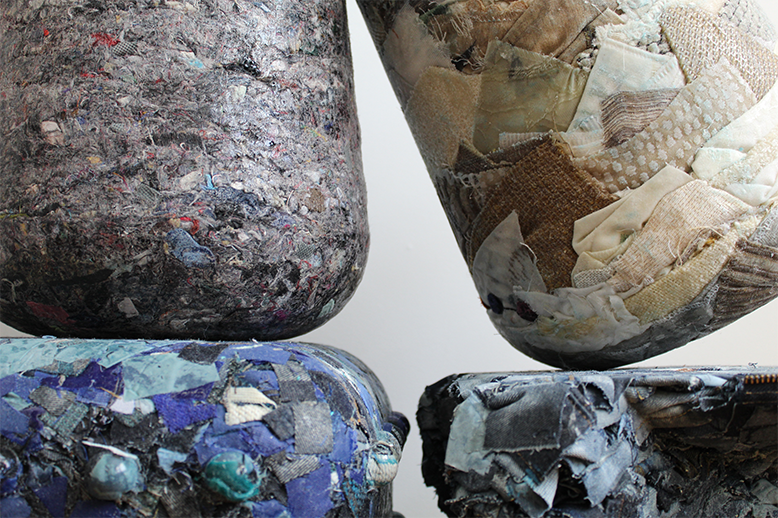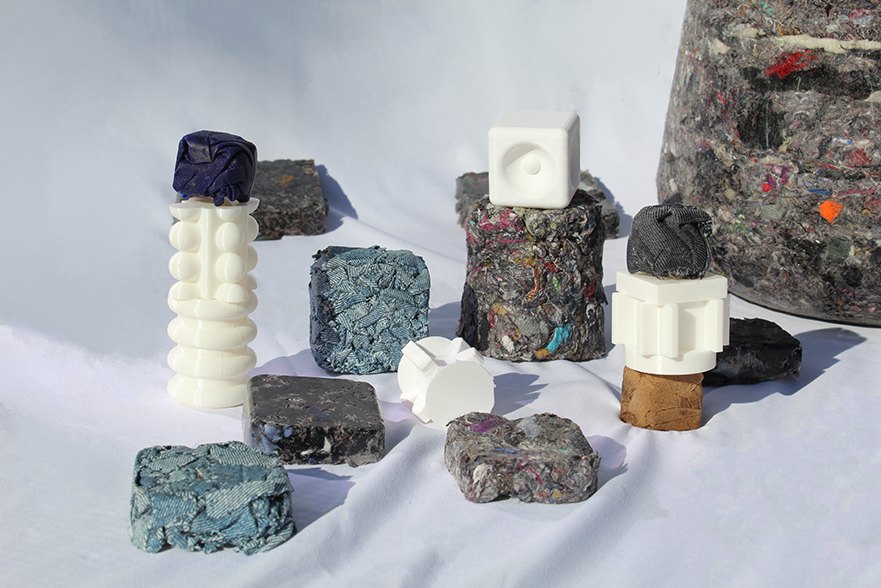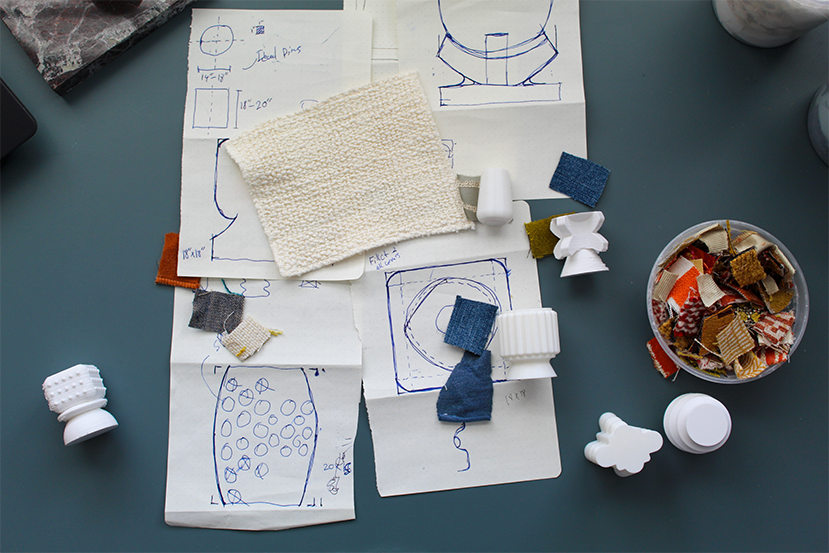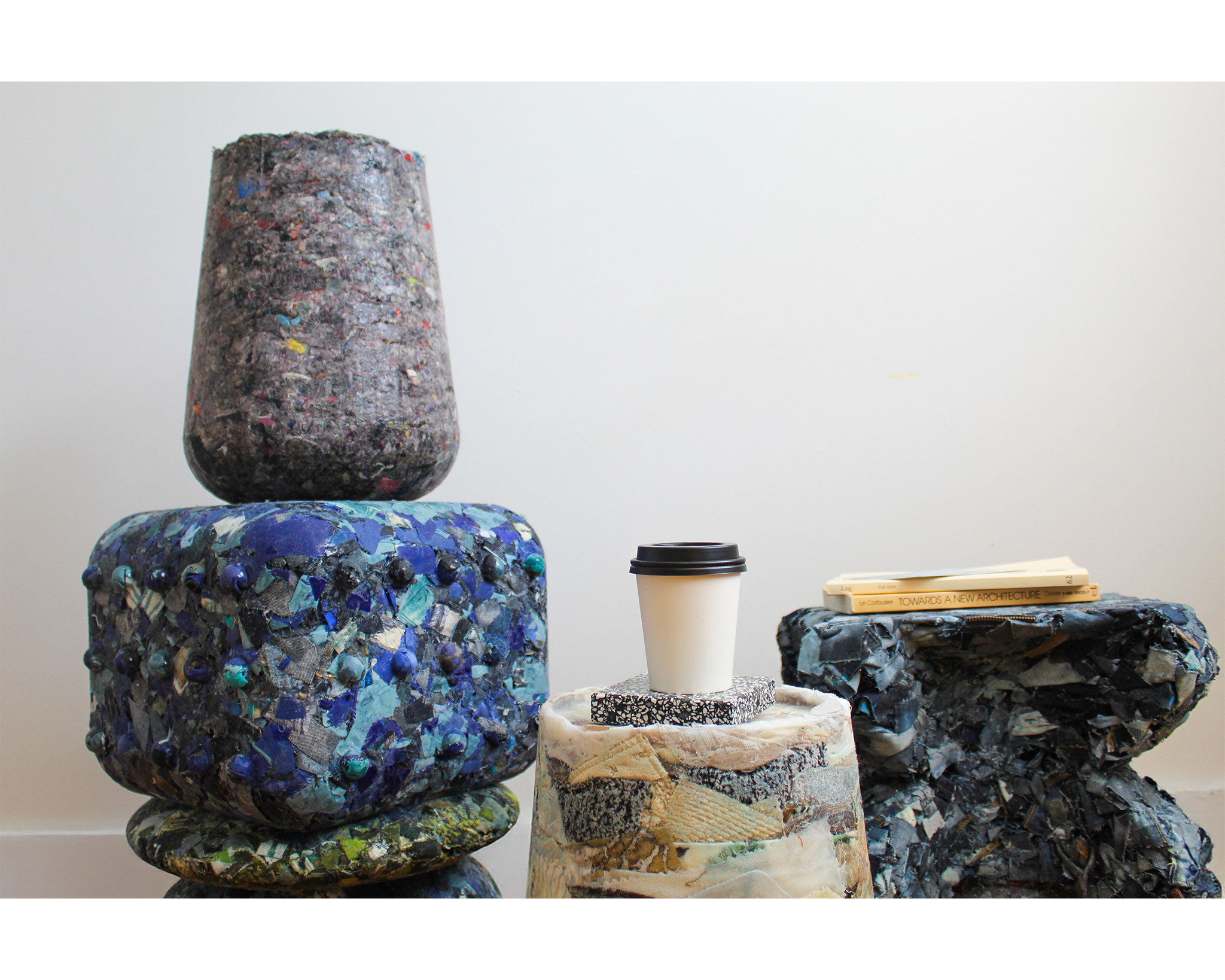The Woven Tales Project: Herencia Tótem Debuts at ICFF
The Woven Tales Project is an ongoing design initiative exploring how textile waste can be reimagined through architecture, furniture, and product design. Rooted in open-ended material experimentation, the project investigates new life cycles for discarded textiles—inviting alternative narratives around value, reuse, and heritage. This year, School of Architecture alumni Paula Stoddard Sotomayor and Michael Ortiz Jiménez are proud to debut their latest collection, Herencia Tótem, at Launch Pad at WantedDesign, part of the International Contemporary Furniture Fair (ICFF) in New York City.
“WANTED was created in 2011 by Odile Hainaut and Claire Pijoulat (founders of WantedDesign) and has quickly become the platform for discovering new talent around the world, the place to engage with a diverse professional network, and the place to initiate new collaborations. WANTED was acquired by Emerald in 2019 and takes place in conjunction with the International Contemporary Furniture Fair (ICFF)”
Born out of research during the fifth semester M.Arch studio at Pratt Institute School of Architecture—and awarded the Start-up Power Award at the 2024 Pratt Research Open House—The Woven Tales Project evolved as a response to the pressing need for more thoughtful, circular design practices. Their approach embraces uncertainty and process-based making, allowing reclaimed textiles to guide both form and function.

Reclaiming Material, Reclaiming Narrative
The Herencia Tótem collection transforms textile waste—fashion offcuts, damaged garments, discarded fabric samples—into sculptural, functional objects. Designed as stackable forms, each piece functions individually as a stool or side table, but can also be combined into striking totemic arrangements.
This stackability is both practical and symbolic: like layers of memory or fragments of cultural history, each module contributes to a broader story. By freezing these materials mid-transformation, the works capture a moment in time—where histories of labor, craft, and consumption intersect.
As textiles are bound and cast, their tactile qualities shift—some areas harden into stone-like solidity, while others retain a visible softness, revealing the fibers’ past lives. No two pieces are alike. Colors and textures emerge unpredictably, lending each object a singular identity and expressive depth.

A Cultural Totem, A Material Archive
Rooted in their Puerto Rican heritage, Herencia Tótem reinterprets traditional symbols, crafts, and forms through a contemporary lens. The name—Herencia meaning “heritage,” and Tótem referencing ceremonial markers—reflects the collection’s dual intent: to honor cultural memory while crafting new possibilities for material expression.
These objects are not just furniture; they are artifacts of transformation—elevating overlooked materials into collectible, culturally resonant forms. Each piece serves as a tactile archive, preserving stories of use and labor, while pointing toward a future where waste is redefined as resource.

Toward New Design Ecologies
It questions linear models of production and disposal, proposing instead a cyclical, narrative-based approach to making.
As the collection evolves, so does their understanding of how discarded textiles can be reimagined as spatial, functional, and symbolic components. Through this process, they aim to expand the boundaries of what sustainable design can look and feel like—layered, cultural, experimental, and deeply human. Beyond transforming waste into functional pieces, our goal is to use craft as a lens to expose the scale of global textile waste—stacking stories of labor, heritage, and renewal into forms that invite both reflection and change.
